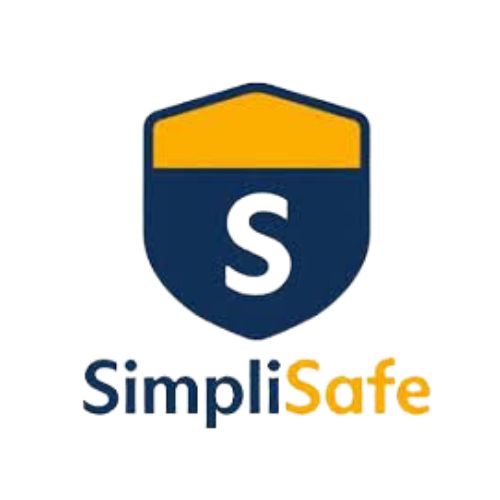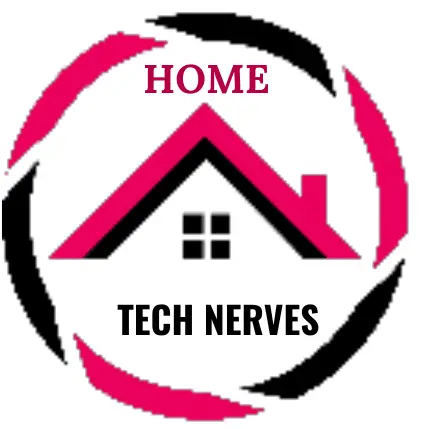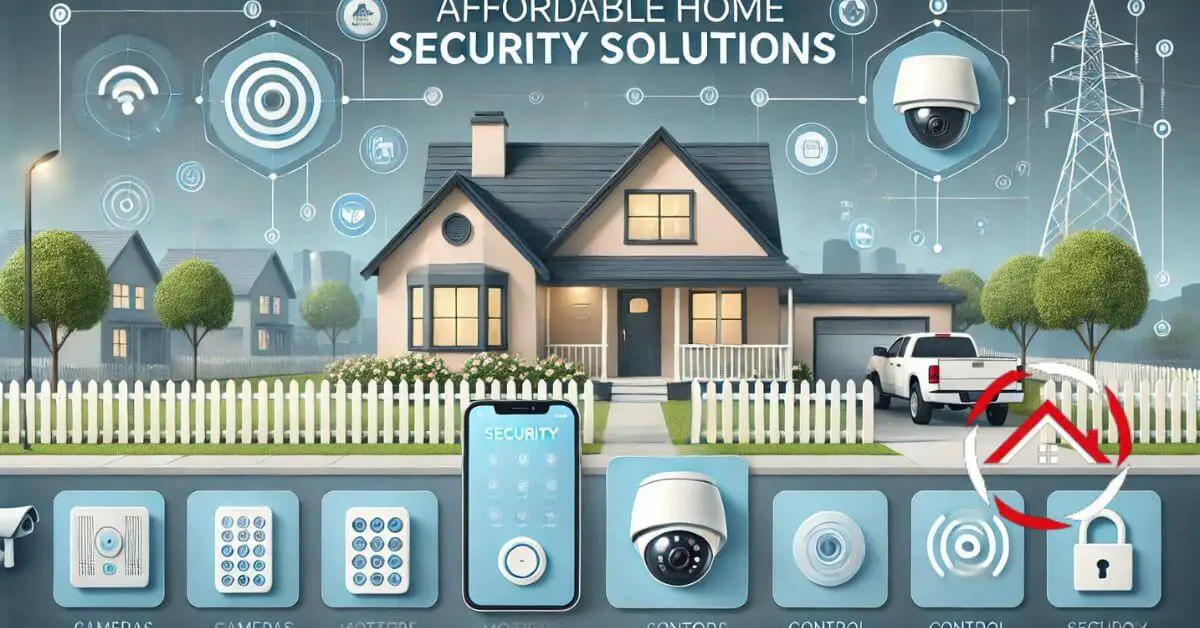Affordable home security systems have become a practical choice for many homeowners.
These solutions offer peace of mind without breaking the bank. With easy installation and smart features, you can protect your home and loved ones effortlessly.
Advanced technology, like surveillance cameras and smart sensors, now comes at a fraction of the cost.
Plus, you can control everything through your phone. Whether you live in a house or an apartment, there’s a budget-friendly system that fits your needs.
In this guide, we’ll explore how affordable options can help you feel safer and more secure in your own home.
Disclosure: This post contains affiliate links. If you purchase through these links, I may earn a small commission at no extra cost to you.
Table of Contents
Best Cheap Home Security Systems Compared:
Home Security Systems Comparison
| Brand | Key Features | Customer Rating | Buy |
|---|---|---|---|
| SimpliSafe | DIY installation, smoke and water sensors | ⭐⭐⭐⭐ | 🔴 Buy on Amazon |
| Ring | Video streaming, motion detection, Alexa integration | ⭐⭐⭐⭐ | 🔴 Buy on Amazon |
| Wyze | AI alerts, voice control, affordable cameras | ⭐⭐⭐⭐ | 🔴 Buy on Amazon |
| Abode | Smart home integration, geofencing | ⭐⭐⭐ | 🔴 Buy on Amazon |
Components of Affordable Home Security Systems
Affordable home security systems are equipped with various components that work together to provide comprehensive protection.
Each component plays a unique role in ensuring your home remains secure and monitored. Let’s break down the key components of these systems.
Surveillance Cameras
Surveillance cameras are the eyes of your security system. They monitor and record activities around your home, providing visual evidence and real-time alerts.
- Indoor and Outdoor Cameras: Ideal for keeping an eye on the inside and outside of your home. They offer flexibility in placement to cover entry points and open areas.
- Motion Detection: Detects unusual movements and triggers alerts, helping you respond quickly to potential threats.
- Night Vision: Enables visibility in low-light conditions, ensuring round-the-clock surveillance.
Smart Sensors
Smart sensors provide real-time updates about what’s happening in and around your home. They are essential for early detection and prevention.
- Door/Window Sensors: Detects when a door or window is opened unexpectedly, sending instant alerts to your phone.
- Motion Detectors: Senses movement in specific areas, which can be used to trigger alarms or cameras.
- Glass Break Sensors: Picks up the sound of breaking glass, alerting you to potential break-ins through windows or glass doors.
Alarms and Sirens
Alarms and sirens are crucial deterrents that can scare off intruders and alert neighbors.
- Audible Alarms: Produces loud sounds when a security breach is detected, creating a psychological barrier for potential intruders.
- Siren Alerts: Can be paired with smart sensors and cameras to create a cohesive response to suspicious activities.
Control Hubs
The control hub is the brain of your security system, connecting all the components and making them accessible through a single interface.
- Central Control Panels: Allows you to arm/disarm the system, view camera feeds, and get alerts.
- Smartphone Apps: Provides remote control and monitoring of your security system. Allows you to adjust settings and receive alerts even when you’re away.
Smart Integrations
Smart integrations help you connect your security system with other smart home devices, creating a more integrated and automated home environment.
- Voice Assistants: Compatible with Alexa, Google Home, and other voice assistants for hands-free control and updates.
- Home Automation: Integrates with smart lights, locks, and thermostats, enabling complete control over your home environment through a single system.
- IFTTT Compatibility: Allows you to create custom automation rules, such as turning on lights when motion is detected.
Each component works in harmony to provide an effective and affordable home security solution that can be tailored to fit your specific needs.
Read more: Essential Components of Home Security Systems
Types of Affordable Home Security Systems
There are two primary types of affordable home security systems: DIY systems and professionally monitored systems. Understanding their differences can help you choose the right one for your home security needs and budget.
DIY Home Security Systems
DIY home security systems are designed for homeowners who prefer to set up and manage their security on their own. They are usually more affordable, flexible, and easy to install.
Explanation and Benefits of DIY Setups:
- DIY systems are easy to install without professional help. They typically come with pre-programmed devices that connect wirelessly.
- These systems often don’t require long-term contracts or high monthly fees.
- Most DIY options offer smartphone apps for remote control, making it simple to monitor your home from anywhere.
- They are customizable, allowing you to add or remove components as needed.
Key Brands and Products in This Category:
- SimpliSafe: Offers a wide range of affordable equipment with no contracts. Easy to set up and operate.
- Ring Alarm: Known for its integration with Ring cameras and affordable monitoring plans.
- Wyze Home Monitoring: Provides an incredibly low-cost option with basic but effective home security features.
- Abode: A flexible, modular system that supports many third-party integrations.
Read more: Best DIY Home Security Systems
Professional Monitoring Systems
Professional monitoring systems offer continuous surveillance and support from a monitoring center, ensuring quick responses in emergencies.
These systems often include more advanced features and professional assistance.
Explanation of Low-Cost, Professionally Monitored Options:
- Professional monitoring services involve security experts who respond to alerts, notify emergency services, and provide support 24/7.
- These systems often come with comprehensive equipment packages that include cameras, sensors, and control panels.
- Monthly monitoring fees are generally higher than DIY options but offer greater peace of mind and less involvement from the homeowner.
Comparison Between DIY and Professional Systems:
- Features: Professional systems may offer features like fire and carbon monoxide monitoring, while DIY options often focus on basic security.
- Cost: DIY systems have lower upfront and monthly costs. Professional systems can be more expensive but provide additional services.
- Control: DIY systems give users complete control over installation and management. Professional systems are managed and monitored by security companies.
Choosing between DIY and professional systems depends on your preference for control, budget, and the level of security you require.
Both options can be affordable and effective, depending on your specific needs.
Read more: Professional vs DIY Home Security Systems
Top Affordable Home Security System Providers
When looking for affordable home security systems, it’s essential to compare features, prices, and customer satisfaction.
Here’s an overview of some of the leading brands in the affordable home security space.
SimpliSafe
SimpliSafe is known for its easy-to-install equipment, flexible pricing plans, and no-contract policy.
- Key Features:
- DIY installation with comprehensive equipment packages.
- Advanced options like smoke and water leak sensors.
- 24/7 professional monitoring is available for a low monthly fee.
- Prices:
- Equipment packages start around $200.
- Monthly monitoring plans range from $14.99 to $24.99.
- Customer Reviews:
- Highly rated for user-friendly setup and quality customer support.
- Some users report connectivity issues with certain devices.
| SimpliSafe Home Security System |
|---|
 |
| Top Features: |
| ✔ 24/7 Professional Monitoring – Instant emergency response |
| ✔ Wireless Security – No drilling or wiring needed |
| ✔ Smart Alerts – Get real-time notifications |
| Customer Ratings: ★★★★★ (4.7/5) |
| Buy on Amazon |
Read more: Review of SimpliSafe Home Security System
Ring
Ring’s home security systems integrate seamlessly with its renowned video doorbells and security cameras.
- Key Features:
- Easy setup and integration with other Ring devices.
- Offers motion detection, live video streaming, and real-time alerts.
- Works well with Amazon Alexa for voice control.
- Prices:
- Basic equipment kits start at $199.
- Professional monitoring available for as low as $10 per month.
- Customer Reviews:
- Praised for reliable video quality and ease of use.
- Some users have concerns about privacy due to cloud storage of videos.
| Ring Home Security System |
|---|
 |
| Top Features: |
| ✔ 24/7 Professional Monitoring – Stay secure always |
| ✔ Smart Alerts – Get instant notifications |
| ✔ Easy Setup – DIY installation |
| Customer Ratings: ★★★★★ (4.8/5) |
| Buy on Amazon |
Read more: Ring Home Security System Review
Wyze
Wyze offers one of the most budget-friendly options, providing essential home security at a fraction of the cost.
- Key Features:
- Compact and simple cameras with clear video quality.
- Smart integrations with Google Assistant and Amazon Alexa.
- Continuous recording and AI-powered alerts available.
- Prices:
- Equipment starts at $30 per camera.
- Monthly monitoring plans are available for as low as $4.99.
- Customer Reviews:
- Positive reviews highlight the exceptional value for money.
- Some users find the app interface less intuitive than competitors.
| Wyze Home Security System |
|---|
 |
| Top Features: |
| ✔ Affordable Security – Budget-friendly protection with no long-term contracts |
| ✔ Smart AI Detection – Detects people, pets, and packages |
| ✔ DIY Installation – Easy setup with step-by-step guidance |
| Customer Ratings: ★★★★★ (4.6/5) |
| Buy on Amazon |
Read more: Wyze Home Security System Review
Abode
Abode’s modular approach makes it an excellent option for homeowners looking for flexibility and smart home integration.
- Key Features:
- Supports a wide range of third-party smart home devices.
- Offers advanced automation features like geofencing.
- No contract required, with an option for on-demand professional monitoring.
- Prices:
- Starter kits begin at around $229.
- Monthly plans range from $6 to $20.
- Customer Reviews:
- Appreciated for its compatibility with Z-Wave and Zigbee devices.
- Some users report occasional delays in alert notifications.
| Abode Home Security System |
|---|
 |
| Top Features: |
| ✔ Smart Home Integration – Works with Alexa, Google Assistant & Apple HomeKit |
| ✔ No Contracts – Flexible security with no long-term commitments |
| ✔ DIY or Professional Monitoring – Choose what fits your needs |
| Customer Ratings: ★★★★★ (4.6/5) |
| Buy on Amazon |
Read more: Abode Home Security Review
Key Considerations When Choosing an Affordable Home Security System
Selecting the right home security system requires evaluating several key factors. By understanding your specific needs and comparing options, you can find an affordable solution that offers optimal protection and value.
Budget
Budget is one of the most important aspects to consider when choosing a home security system.
- Total Cost of Ownership: Look beyond the initial equipment cost. Consider ongoing expenses like monthly monitoring fees, maintenance, and potential upgrades.
- Upfront Equipment Cost: Compare packages to see what’s included (cameras, sensors, alarms) and whether additional components are needed.
- Subscription Plans: Evaluate the cost and terms of any required subscription plans. Some systems offer basic monitoring for free, while others may charge for cloud storage or advanced features.
Features
Understanding which features are essential helps you focus on systems that meet your specific security requirements.
- Prioritizing Security Needs: Consider your home’s layout and vulnerabilities. Do you need more cameras or additional door/window sensors?
- Smart Integrations: Determine if integration with smart home devices (lights, thermostats) or voice assistants like Alexa or Google Home is important to you.
- Emergency Features: Look for features like panic buttons, smoke detectors, and flood sensors, especially if your home has specific safety concerns.
Read more: Home Security System Features
Ease of Installation and Use
Depending on your technical comfort level, you may prefer systems that are easy to install and manage.
- DIY vs. Professional Installation: DIY systems are typically cheaper and easier to install, but require more hands-on management. Professional installation can be more reliable but often comes with additional costs.
- User Interface: Choose systems with intuitive apps and control panels that make managing and monitoring your security effortless.
- Remote Access and Control: Ensure the system offers mobile apps or web interfaces for remote access and real-time control.
Read more: How to Install a Home Security System
Scalability
Scalability is crucial if you anticipate expanding or upgrading your system as your needs evolve.
- Expandable Systems: Check if the system allows you to add more devices like cameras, sensors, or smart locks over time without replacing the existing setup.
- Compatibility with New Technologies: Opt for systems that are compatible with future updates or emerging technologies like AI-powered monitoring or enhanced automation features.
- Customizable Alerts and Rules: Systems that allow custom alerts and automation rules (like turning on lights when motion is detected) offer greater flexibility.
By considering these factors, you can choose a home security system that fits your budget, provides essential features, is easy to use, and offers the flexibility to grow with your needs.
Benefits and Limitations of Affordable Home Security Systems
Affordable home security systems provide practical solutions for homeowners who want to safeguard their properties without spending a fortune.
However, while these systems offer many advantages, they also have certain limitations.
It’s important to weigh these pros and cons when deciding on the best security option for your home.
Benefits
Cost-Effective Solution for Basic Home Protection:
- Affordable systems offer essential security features, such as cameras, motion sensors, and alarms, at a fraction of the cost of traditional setups.
- They are a great starting point for homeowners looking for basic protection against break-ins and intrusions.
Flexibility and Ease of Installation:
- Most affordable systems are designed for DIY installation, eliminating the need for professional services and additional expenses.
- They can be set up quickly and easily, making them suitable for renters or those who move frequently.
Remote Monitoring and Control Through Smartphones:
- Modern affordable systems often come with smartphone apps that enable remote monitoring, control, and real-time alerts.
- Users can check in on their homes, receive notifications, and even control other connected devices (lights, locks) through their smartphones.
No Long-Term Contracts or Hidden Fees:
- Many affordable systems do not require long-term contracts, allowing users to opt in and out of professional monitoring services as needed.
- This flexibility means no hidden fees or unexpected charges, making them suitable for budget-conscious homeowners.
Limitations
Potential Trade-Offs in Advanced Features or Professional-Grade Security:
- Some affordable systems may lack advanced features like facial recognition, 24/7 professional monitoring, or emergency response services.
- DIY setups might not offer the same level of comprehensive security as professionally installed systems.
Limited Professional Support in Some DIY Options:
- DIY systems often rely on the user for maintenance and troubleshooting, which can be challenging for those less tech-savvy.
- Professional support may be limited to online resources, email, or phone calls rather than in-person assistance.
Reliability Issues with Low-Cost Hardware:
- Inexpensive components may not be as durable or reliable as higher-end systems, potentially leading to connectivity issues or false alarms.
- Video quality, especially in budget cameras, might be lower, affecting the effectiveness of surveillance.
Vulnerability to Power or Internet Outages:
- Most affordable systems depend on Wi-Fi or cellular connections, making them susceptible to power outages or network disruptions.
- Backup options like battery power or cellular failover might be limited or not included in basic packages.
Affordable home security systems offer a practical way to enhance safety without a hefty investment.
While they may not provide the highest level of protection, their flexibility, ease of use, and budget-friendly nature make them a strong option for many homeowners.
Understanding these benefits and limitations will help you make an informed decision based on your unique security needs.
Future Trends in Affordable Home Security Systems
The home security landscape is evolving rapidly, driven by technological advancements and changing consumer preferences.
As innovations continue to emerge, affordable home security systems are becoming smarter, more integrated, and more accessible.
Here’s a look at the key trends shaping the future of this industry.
Technological Innovations
AI and Machine Learning Integration:
- Advanced home security systems are increasingly incorporating AI and machine learning algorithms to enhance threat detection and system efficiency.
- AI-enabled cameras can differentiate between humans, animals, and inanimate objects, reducing false alarms.
- Machine learning models can learn user behavior patterns, making systems more adaptive and responsive to unusual activities.
Enhanced Connectivity with 5G Technology:
- The rollout of 5G technology is set to revolutionize home security by providing faster and more reliable connections for real-time video streaming and cloud-based services.
- Improved bandwidth and reduced latency enable quicker response times and seamless integration with other smart home devices.
- 5G also supports advanced security features like high-definition video, facial recognition, and instantaneous alerts, even in remote areas.
Evolving Market Dynamics
Trends Towards Subscription-Based Models and Bundled Services:
- More companies are offering flexible subscription models, allowing users to choose between DIY monitoring or professional services.
- Bundled services combining security, home automation, and insurance discounts are becoming more popular, providing comprehensive solutions at a reduced cost.
- Subscription plans often include additional features like video storage, advanced monitoring, and smart integrations, making them more appealing to budget-conscious consumers.
Expansion of DIY Options:
- DIY systems are getting more sophisticated, with modular components that can be easily added or removed.
- This trend is making high-quality security solutions accessible to renters and homeowners alike without needing extensive modifications or installations.
Impact of IoT (Internet of Things)
Increasing Adoption of IoT Devices for Comprehensive Home Automation and Security:
- IoT integration is enhancing home security by connecting various smart devices like cameras, doorbells, lights, and locks into a unified network.
- The interoperability of devices allows for comprehensive automation rules, such as turning on lights when motion is detected or locking doors automatically when you leave home.
- Voice-activated commands via Alexa, Google Assistant, or Siri make managing home security more intuitive and hands-free.
Smart Home Hubs and Ecosystem Compatibility:
- The growing compatibility of security systems with popular smart home platforms like Apple HomeKit, Google Nest, and Amazon Echo is leading to more seamless user experiences.
- Future systems will likely support an even broader range of IoT devices, creating a fully interconnected smart home environment.
Predictions for the Future
- Smarter and More Autonomous Systems: AI advancements will lead to security systems that can predict threats before they occur by analyzing patterns and behaviors.
- Affordable Advanced Features: Technologies like biometric recognition, voice authentication, and cloud-based AI processing will become more affordable and accessible to the average consumer.
- Sustainability and Green Energy: Home security devices powered by solar energy or featuring energy-efficient designs will become more prevalent, appealing to eco-conscious consumers.
These trends suggest that the future of affordable home security systems will be defined by smarter technology, enhanced connectivity, and greater accessibility, offering robust protection at lower costs and with fewer barriers to entry.
Wrap Up
Affordable home security systems provide essential protection through features like cameras, smart sensors, and remote monitoring at a budget-friendly cost.
They offer flexibility, ease of installation, and integration with smart home devices.
While some limitations exist, such as fewer advanced features, these systems are ideal for basic security needs.
Investing in an affordable system enhances safety and peace of mind. It’s crucial to research and select a solution that suits your home and lifestyle requirements.
Frequently Asked Questions
What features should I look for in an affordable home security system?
Look for essential features such as motion sensors, door/window sensors, a reliable alarm system, and mobile app integration. Additional features like cameras and professional monitoring can also enhance security without significantly increasing costs.
Are affordable home security systems reliable?
Yes, many affordable home security systems offer reliable protection with modern technology. They often include basic features like alarms, sensors, and remote monitoring, ensuring safety and convenience. Choose reputable brands to ensure quality performance and avoid potential technical issues.
Can I install an affordable home security system by myself?
Many affordable home security systems are designed for DIY installation, making it easy for homeowners to set up without professional help. These systems come with clear instructions, and some even offer online support or customer service assistance during the installation process.
Do affordable home security systems offer professional monitoring?
Yes, some affordable home security systems provide professional monitoring options at a lower cost. These plans usually involve a monthly fee, but they ensure 24/7 support and emergency response, giving you peace of mind without breaking the bank.


